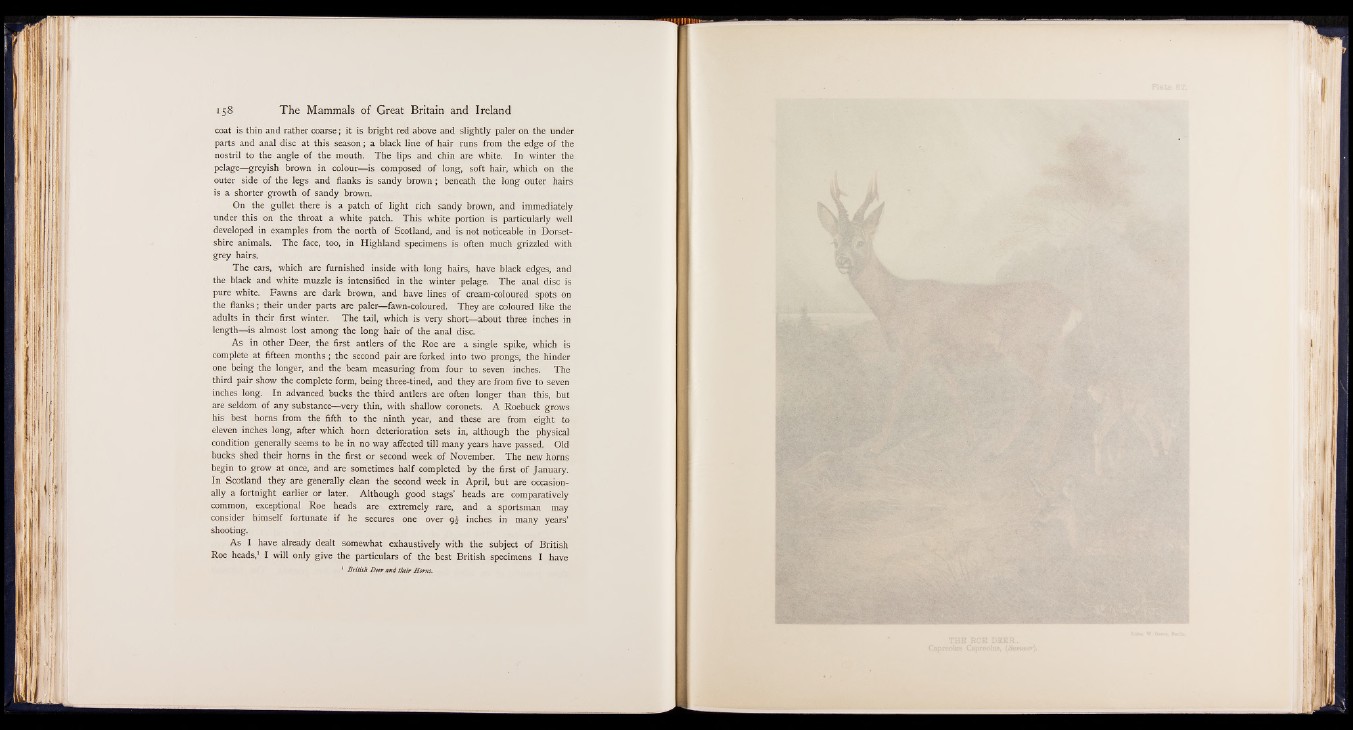
The Mammals of Great Britain and Ireland
coat is thin and rather coarse; it is bright red above and slightly paler on the under
parts and anal disc at this season; a black line of hair runs from the edge of the
nostril to the angle of the mouth. The lips and chin are white. In winter the
pelage— greyish brown in colour— is composed of long, soft hair, which on the
outer side of the legs and flanks is sandy brown ; beneath the long outer hairs
is a shorter growth of sandy brown.
On the gullet there is a patch of light rich sandy brown, and immediately
under this on the throat a white patch. This white portion is particularly well
developed in examples from the north of Scotland, and is not noticeable in Dorsetshire
animals. The face, too, in Highland specimens is often much grizzled with
grey hairs.
The ears, which are furnished inside with long hairs, have black edges, and
the black and white muzzle is intensified in the winter pelage. The anal disc is
pure white. Fawns are dark brown, and have lines of cream-coloured spots on
the flanks; their under parts are paler— fawn-coloured. They are coloured like the
adults in their first winter. The tail, which is very short— about three inches in
length— is almost lost among the long hair of the anal disc.
As in other Deer, the first antlers of the Roe are a single spike, which is
complete at fifteen months ; the second pair are forked into two prongs, the hinder
one being the longer, and the beam measuring from four to seven inches. The
third pair show the complete form, being three-tined, and they are from five to seven
inches long. In advanced bucks the third antlers are often longer than this, but
are seldom of any substance— very thin, with shallow coronets. A Roebuck grows
his best horns from the fifth to the ninth year, and these are from eight to
eleven inches long, after which horn deterioration sets in, although the physical
condition generally seems to be in no way affected till many years have passed. Old
bucks shed their horns in the first or second week of November. The new horns
begin to grow at once, and are sometimes half completed by the first of January.
In Scotland they are generally clean the second week in April, but are occasionally
a fortnight earlier or later. Although good stags’ heads are comparatively
common, exceptional Roe heads are extremely rare, and a sportsman may
consider himself fortunate if he secures one over 9^ inches in many years’
shooting.
As I have already dealt somewhat exhaustively with the subject of British
Roe heads,1 I will only give the particulars of the best British specimens I have
1 British Deer and their Horns.